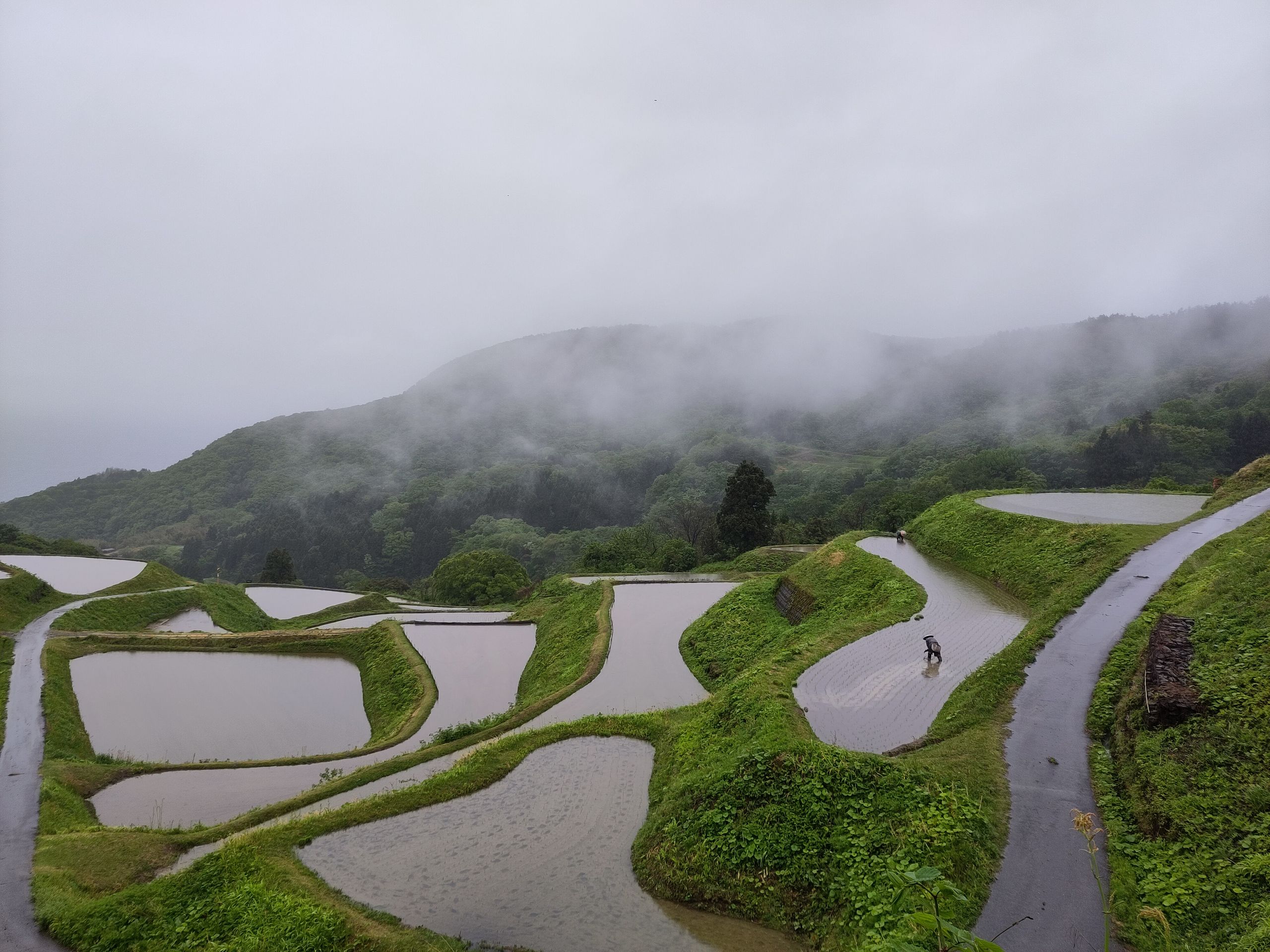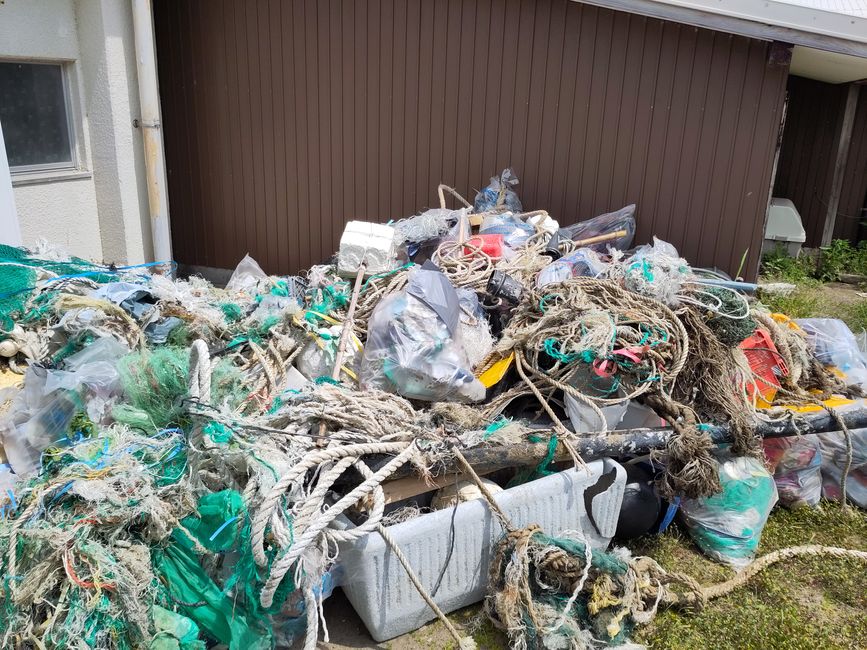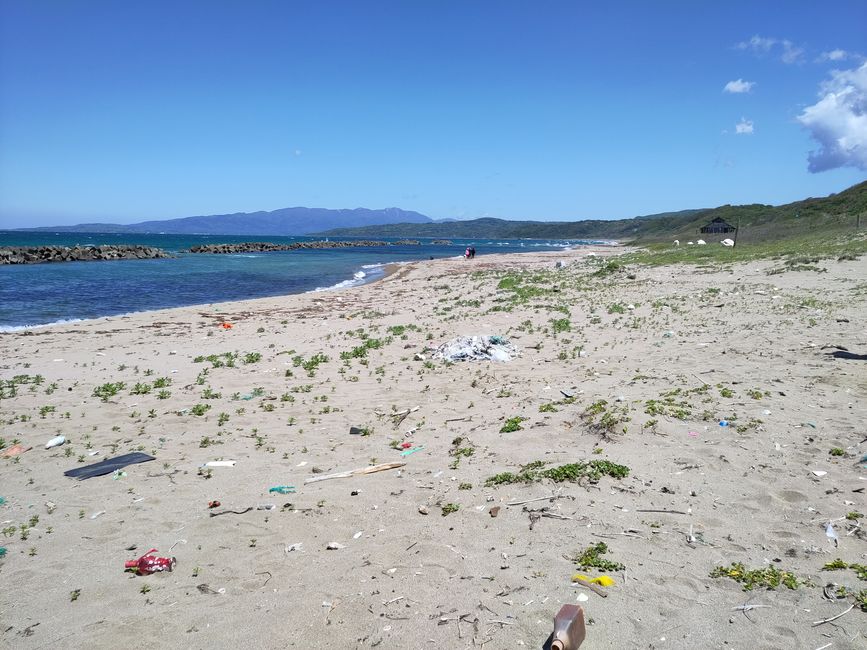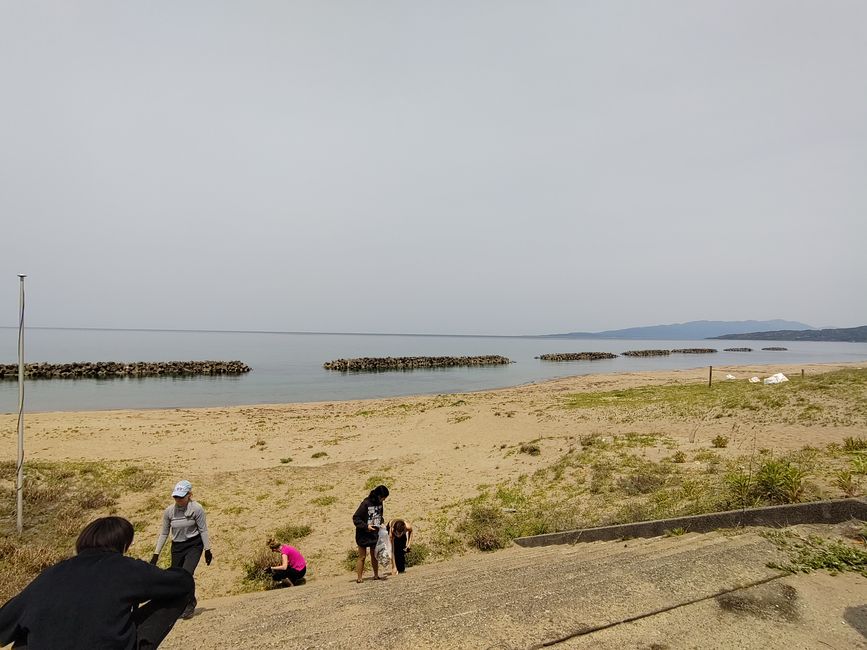Sado - Beach Cleanup
Verëffentlecht: 22.05.2023
Abonnéiert Iech op Newsletter
The school class from Tokyo is having their last day today and before they leave, we are using the morning to clean up trash on a beach. It is one of the places we visited two days ago and the beach with the most plastic waste. We divide into groups of six people and each group forms a pile with their collected trash. In the end, the group with the biggest pile will get a reward. We are also supposed to pay attention to the labels on the items to determine where they come from. We set aside things that we find particularly interesting to show later in a meeting.
There is a lot of trash on the beach. So much that we can't clean it completely. Many of the plastic pieces are buried under the sand and not visible, some pieces crumble into tiny fragments when you pick them up. And a lot of it is already mixed with the sand and impossible to collect, spreading microplastics all over the beach. Sometimes you pull on a small piece of string and end up holding a 2-meter long, 20-centimeter thick rope in your hand.
For one hour, we collect everything we can see and grab, and when the time is up, we gather at the steps leading down to the beach to inspect our trash piles. The teachers of the class conclude that it is impossible to determine a winner, as the amount of collected trash does not indicate the size of the pile, since there are so many items of different sizes. They say the true winner is the beach, as you can clearly see a difference compared to before. In the meeting, one person from each group shares what we have noticed. Most everyday items come from Japan, South Korea, China, and occasionally Russia, the countries that are closest. But we also find things that come from further away, and there is even a hazardous waste container from Germany. There is also no shortage of recycled trash. This shows that recycling unfortunately does not solve the problem. I myself did not understand this fact for a long time. Yes, when you recycle plastic, you give it a second chance and prevent it from entering the environment for now. But you also give it a second chance to end up in the ocean. For plastic waste, there are only two destinations. Incineration or the environment, usually the sea. However, at least half of the trash does not come from bottles, flip-flops, toothbrushes, or packaging, but from fishing. Buoys, nets, ropes, hooks, and funnel-shaped sieves make up a large part of the found objects. They are lost at sea and no one cares about what happens to them afterwards. These nets, which are made for catching fish, continue to kill many marine creatures. Eventually, like the rest of the plastic waste, they are ground into microplastics. Then fish and other animals eat them, and then we eat the fish and other animals.
After going through the trash piles, we carry everything to the roadside, where we create a large pile that will be taken away by the garbage truck and later burned. It is now time for the school class to go home and the remaining participants have the afternoon off. We sit in the sun for another hour and enjoy a (somewhat) clean piece of beach.
There is a lot of trash on the beach. So much that we can't clean it completely. Many of the plastic pieces are buried under the sand and not visible, some pieces crumble into tiny fragments when you pick them up. And a lot of it is already mixed with the sand and impossible to collect, spreading microplastics all over the beach. Sometimes you pull on a small piece of string and end up holding a 2-meter long, 20-centimeter thick rope in your hand.
For one hour, we collect everything we can see and grab, and when the time is up, we gather at the steps leading down to the beach to inspect our trash piles. The teachers of the class conclude that it is impossible to determine a winner, as the amount of collected trash does not indicate the size of the pile, since there are so many items of different sizes. They say the true winner is the beach, as you can clearly see a difference compared to before. In the meeting, one person from each group shares what we have noticed. Most everyday items come from Japan, South Korea, China, and occasionally Russia, the countries that are closest. But we also find things that come from further away, and there is even a hazardous waste container from Germany. There is also no shortage of recycled trash. This shows that recycling unfortunately does not solve the problem. I myself did not understand this fact for a long time. Yes, when you recycle plastic, you give it a second chance and prevent it from entering the environment for now. But you also give it a second chance to end up in the ocean. For plastic waste, there are only two destinations. Incineration or the environment, usually the sea. However, at least half of the trash does not come from bottles, flip-flops, toothbrushes, or packaging, but from fishing. Buoys, nets, ropes, hooks, and funnel-shaped sieves make up a large part of the found objects. They are lost at sea and no one cares about what happens to them afterwards. These nets, which are made for catching fish, continue to kill many marine creatures. Eventually, like the rest of the plastic waste, they are ground into microplastics. Then fish and other animals eat them, and then we eat the fish and other animals.
After going through the trash piles, we carry everything to the roadside, where we create a large pile that will be taken away by the garbage truck and later burned. It is now time for the school class to go home and the remaining participants have the afternoon off. We sit in the sun for another hour and enjoy a (somewhat) clean piece of beach.
Abonnéiert Iech op Newsletter
Äntwert
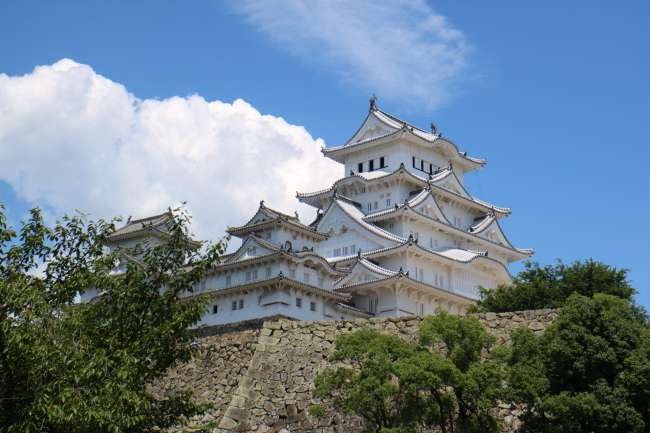
Reesberichter Japan
